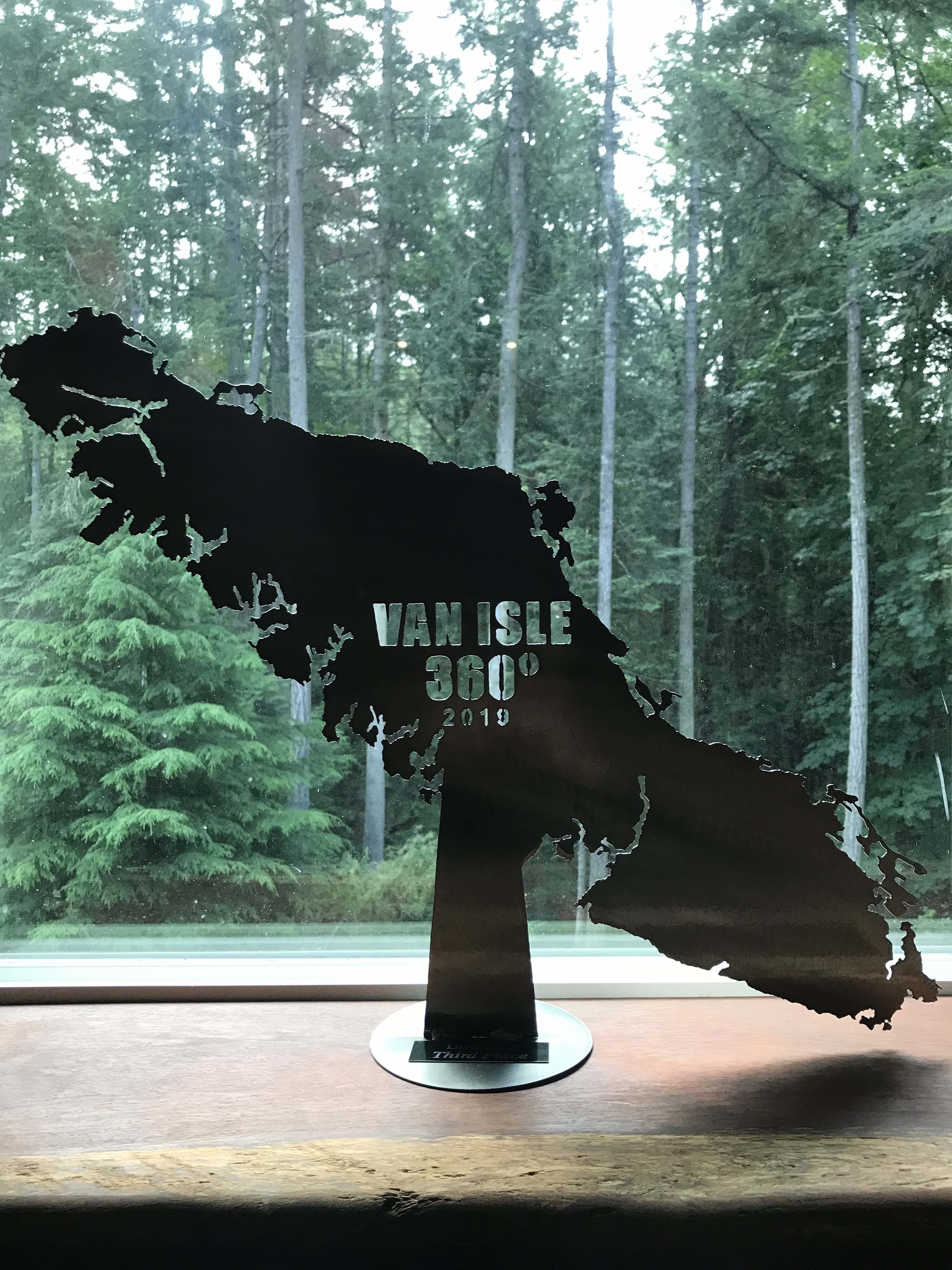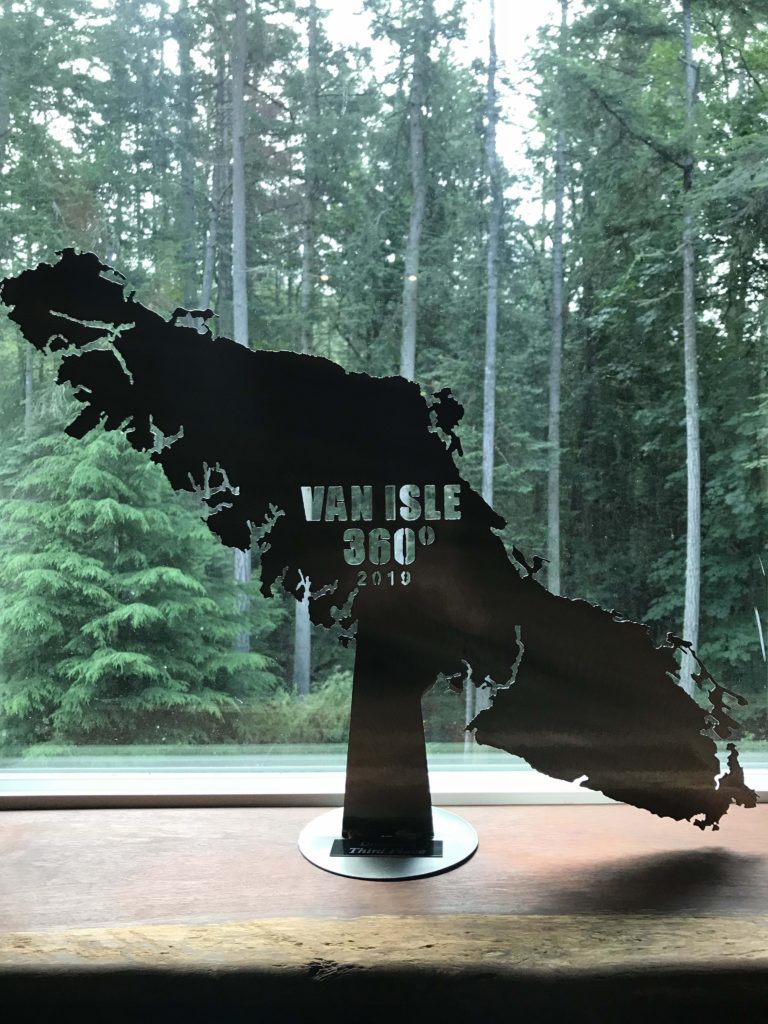Van Isle – Reflections

Well, the 2019 Van Isle 360 is done and dusted, so we sit here basking in the glow of completing another fantastic adventure. I thought a lot about how Van Isle might compare to other experiences before, during, and after the actual event. I would say may expectations were universally met. The scenery and wildlife were as wild and beautiful as we hoped. We saw orcas, greys, humpbacks, pacific white-sided dolphins, sea lions, seals, sea otters, and probably some other cool sea creatures that I’m forgetting. Two of our crew saw bears on the beach near Winter Harbour. The building comradery across the fleet as the race progressed was a welcome change to the typical race or regatta were you usually get one, maybe two opportunities to meet others in the race. I’m an introvert, so it takes me a few meetups to start communicating normally, making this difference really an important aspect of the overall experience. I also enjoyed, that while Van Isle is a long, endurance event, you still get a full night of sleep most nights. My favorite aspect of the race though is the multiple leg format and this is what I feel sets Van Isle apart from other long-distance races. Having 9 legs meant that if you had a poor leg or a breakdown, you could hit the dock, regroup, and start the next day on even footing with your competition. I’m doubtful there are any other races of 600+ miles where you can see your competition 95% of the time. To me that really made for a fun, competitive experience.
A review of Van Isle wouldn’t be complete without exhorting the virtues of our fantastic crew. Probably a mixture of careful planning and luck we ended with the perfect group of 5 to share 2+ weeks on a small boat. In my view, 5 was the right number. Small enough that we could sleep comfortably onboard, have room for gear, and room for food. 5 kept everyone busy during the races and was just enough hands on deck to cover the frantic moments. I can only find disadvantages to having 4 or 6 onboard. Interestingly, we had the second lowest declared crew weight after the little GP26 and roughly half of the fleet were smaller than us. Again, we were really fortunate to have a cheerful, hard-working, gracious, thoughtful crew. This, I’m sure made the entire experience much better. Thanks again Matt, Jaime, and Oren for making this adventure far better.
Van Isle can be a real test of a boat and boat preparations. While we didn’t have any extreme weather, 25 knots upwind, and 38 knots downwind, it was still a long haul around the rock. That said, our breakdowns were almost inconsequential. The gimbal lock on the oven broke during the long upwind leg from Winter Harbour. Not surprisingly, we had some chafe on the J1 were it wraps around the shroud bases. That was easily patched up. Given we probably tacked 200-300 times, our mostly UK sails held up remarkably well. We did have up our Ballard Sails A2 during the 38 knot blast around Race Rocks and that held up too where a lot of kites did not. It turned out that electronic gremlins were our biggest issue. The knotmeter stopped working right as we finished in Victoria, but after pulling it out at the dock it worked again for the rest of the race. Oh, and our seawater strainer completely clogged with eel grass requiring a return to the dock in Victoria for diagnosis and cleaning. Our main VHF stopped receiving, even though it would still transmit. This was odd, but mostly annoying, as we could still receive with the two handheld VHF’s and respond with the higher powered VHF when necessary. It appears the speaker has failed. The last failure was the only one of any real consequence to the races. Our AIS receiver stopped working. It was a real puzzle too, because it was still transmitting. Not having AIS put us at a disadvantage where our competition could observe boats far away, or even on the other side of an island and know their heading and speed. We definitely made a few tactical errors because we couldn’t see what was going on within the fleet while our competition could. It’s still unclear whether the issue lies with the AIS unit, the VHF splitter, or the antenna. Otherwise we are perfectly happy with our preparations and how the boat held up. I wouldn’t change anything on this front for next time.
By the time we arrived at the start line for Van Isle we knew Shearwater very, very well. Well over 10,000nm sailed over 7 years helped with that, but if there was one area where I felt under-prepared and at times flat confused it was the currents. I can’t count how many times we decided to go “over there” for better current only to find it was worse.
To wrap up here is the race by the numbers:
- We estimate we sailed between 700 and 800 miles (according to Wikipedia, Vancouver Island is 290 miles long and 62 miles at its widest point…and incredulous side note, it’s only Canada’s 11th largest island!).
- The race spanned 9 legs, ranging from 24 miles to 138 miles.
- We managed to finish pretty consistently – our worst finish was two 5th’s, but we won one race and had mostly 2nd’s, 3rd’s, and 4th’s.
- We spent approximately 3.5 hours in the worst wind hole we found (approaching Nanaimo), but found a few others in earlier legs, too…just slightly less painful.
- We saw 38 knots of wind speed, but the legs were classified mostly as light and medium wind speeds, with only the one leg through the Straits of Juan de Fuca to Victoria classified as heavy wind. It was a relatively light wind year. Shearwater would have been happy with more breeze.
- Top boat speed through the water was a bit over 15 knots in the Strait of Juan de Fuca; worst speed was backwards over Nahwitti Bar and in Active Pass.
- We saw marine mammals (whales, dolphins, or sea otters) on six days. Matt saw a pacific sunfish on the Ucluelet leg!
- We saw several of our namesake – the shearwater – on the Ucluelet leg…but weren’t completely sure if they were pink-footed, sooty, or short-tailed.
- Top current speed was a bit over 5 knots – we experienced this as favorable current going upwind. We’ve never gone 12 knots over the bottom UPWIND.
- We brought 3 big boxes of spares plus two spare sails and only used 2 small pieces of sail repair tape to reinforce some chafing on our J1 foot.
- We emptied the 1-gallon pee jug from our composting toilet 3 to 4 times a day – we had a crew of well-hydrated camels.
- We made it through 75% of the Costco tub of red vines. Everyone except for Justin was done with them by the end.
- 38 boats started and 37 finished.
- Only 15 boats finished all of the legs, but that is actually above average for Van Isle.
3 comments
Leave a ReplyCancel reply
Sign up to receive blog updates

Beautiful trophy. I hear others in the yachting community having trouble with or not having any trouble with AIS. It should somehow be faultless considering how important it is.
Thanks for the coverage. Very interesting.
Thanks to your generous log entries, I was able to enjoy the Van Isle from the “arm chair” vantage point, and thoroughly enjoyed it! My guess on the Shearwaters — the Sooty is smaller and usually occurs in huge (millions) loose flocks that fly over the ocean for literally hours, the Short Tailed breeds in Australia and is relatively infrequent here, more in Alaska. So, Pink Footed is likely.
Thank you – and noted on the shearwater id’s!